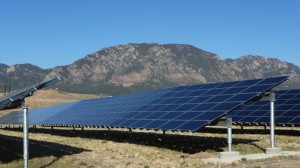 The electric power generation and delivery system in the United States is a vast network of interconnected sources (generators) and loads (customers) primarily owned and operated by large investor-owned utilities, cooperatives and municipalities. The concept hasn’t changed in decades; however, with the ever-increasing reliance on technology in every facet of our lives, the continuity of electric power delivery is increasingly important to all customers. This is where microgrids come into play.
The electric power generation and delivery system in the United States is a vast network of interconnected sources (generators) and loads (customers) primarily owned and operated by large investor-owned utilities, cooperatives and municipalities. The concept hasn’t changed in decades; however, with the ever-increasing reliance on technology in every facet of our lives, the continuity of electric power delivery is increasingly important to all customers. This is where microgrids come into play.
While microgrids can take many forms, the U.S. Department of Energy (DOE) defines a microgrid as the integration and control of multiple local generation and storage assets (diesel generators, combustion turbines, PV arrays, battery systems, etc.) to provide on-site generation for local loads in both grid-tied and islanded modes of operation.
The United States has an energy policy, and while some disagree with that policy, forward-thinking business leaders worldwide are rapidly moving to capitalize on new opportunities. Leaders at large campus environments like universities, medical centers, research facilities and airports, as well as utility producers, are looking to the next generation energy system, or the Grid of the Future. Many campuses manage and operate their own electrical distribution systems with interconnections to the local utility system for normal power delivery. In addition, numerous facilities are also equipped with varying forms of on-site generation — things like combustion turbine generators, steam turbine generators, standby diesel generators and renewables.
With the proper planning, equipment and procedures in place, campus electrical distribution systems can be disconnected from the utility grid in the event of an outage to form their own microgrids. These separate microgrids, in conjunction with on-site generation, can sustain the electrical power needs of the campus to provide continued operation of critical campus systems and facilities for the duration of the utility power outage. However, a reliable, resilient and efficient microgrid capable of sustaining critical campus operations during a utility outage doesn’t happen on its own. Careful evaluation of the system loading, available generation, equipment configuration and necessary modifications are needed to develop a sustainable campus microgrid.
For most campuses, financial resources are limited; therefore, the planning process is crucial to ensure dollars are spent in the most economical and efficient manner. Critical loads, available on-site generation, existing distribution equipment configurations, control systems and utility interconnection requirements need to be studied to develop the most reliable and efficient microgrid for each campus on a case-by-case basis. Many variables must be evaluated to arrive at the best solution for each situation.
So how do you determine if a microgrid is right for your campus? If you’ve ever experienced a power outage that caused all the lights to go out, which will inevitably happen at some point, having a well-designed microgrid with clearly defined procedures and controls in place will ensure your lights stay on and your critical facilities continue to operate. With our increasing reliance on technology for everyday processes, surviving utility power outages through implementation of microgrids is becoming the expectation of campus customers. It’s too expensive not to consider.
If this topic interests you, we’ve got something in common! And if you want to know more, join me and my colleague, Eric Putnam, for a free webinar at 2 p.m. EST on Thursday, May 29. We’ll discuss microgrids in more detail and present recent case studies where these concepts have been applied. Whether you’ve been considering microgrids for your facility or just want to learn more about the concept, join us.
Registration: Practical Overview of Microgrids webinar
Mike Dempsey heads up the electrical department in Burns & McDonnell’s OnSite Energy & Power Group, which designs campus energy systems and develops comprehensive energy master plans. He leads the design of onsite generation facilities, both CHP and emergency/standby systems, overhead and underground medium-voltage distribution, substations, and central utility plants for higher education, healthcare, aviation and industrial campus clients.
